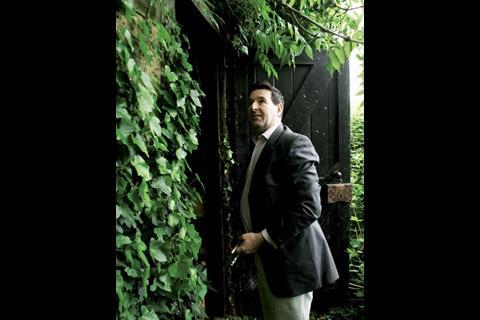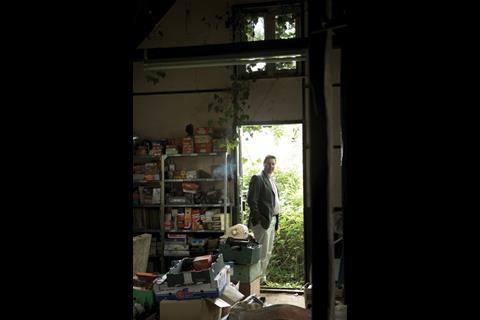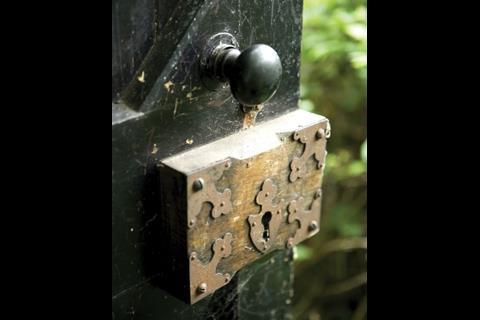Gerald Ringe had one of those classic dreams: buy an old wreck in the country and turn it into a rural retreat. But he hadnŌĆÖt counted on the idiosyncrasies of our planning system. Fourteen years after his first planning application, heŌĆÖs finally giving up. He tells Katie Puckett whyŌĆ”
When Gerald Ringe first laid eyes on the Old Mission Hall in the Essex village of Norton Heath, he had no idea of the heartache it would cause him over the next 14 years. He bought the derelict deconsecrated chapel in 1993 for ┬Ż15,000, intending to renovate it for his family to live in. Ever since then, he has been banging his head against Epping Forest councilŌĆÖs door in a frustrating, fruitless attempt to obtain planning permission.
To date, Ringe estimates he has spent nearly ┬Ż8,000 on planning applications and appeals, and still the chapel lies derelict, ivy creeping up the walls and the roof caving in.
What makes the councilŌĆÖs failure to grant permission for the residential use of the site so perplexing is that Epping Forest is an area in dire need of housing ŌĆō the East of England Regional Assembly says 3,500 homes must be built in the district.
Like everyone in the construction industry, Ringe is well aware of the vagaries of the British planning system ŌĆō heŌĆÖs a for Cushman & Wakefield and has been wrestling with it for more than 30 years. But the failure of the council to follow its own planning guidance has baffled him and everyone else who has heard about the saga. ŌĆ£The more I read it, the more it seems like the system is set up to prevent people doing anything with buildings they own. I still donŌĆÖt understand it. ItŌĆÖs very frustrating,ŌĆØ he says.
The story began when Ringe was living near Norton Heath. His mother-in-law heard that a woman in the village was selling the chapel and mentioned it to him. ŌĆ£We could never afford anywhere in the village,ŌĆØ says Ringe. ŌĆ£The idea was to buy it, renovate it and then live there.ŌĆØ
The site extends 14m along a country road, and 11m back, facing a plant yard and surrounded by open fields. ItŌĆÖs pretty, if overgrown, and is hidden from view behind a high hawthorn hedge. The old hall has open oak beams and had been used as a chapel until the 1940s, when it fell into disuse.
RingeŌĆÖs first attempt to secure planning permission came in 1995. He got Nationwide, a firm of professional planners, on board to do the paperwork and applied to Epping Forest council to demolish the chapel and replace it with a two-storey dwelling. ŌĆ£It wasnŌĆÖt offensive ŌĆō it was a thatched cottage, nothing flashy,ŌĆØ he says. ŌĆ£ItŌĆÖs not as if I donŌĆÖt know the area at all.ŌĆØ
The drawings ŌĆō Ringe has kept all the paperwork ŌĆō show a simple building, very much in keeping with the farmhouses that distantly neighbour the site. The application was refused on the grounds that the site was within the green belt and so no new development could take place.
The following year he had another go. This time he decided to renovate the existing structure, and applied only to change the use of the site to residential.
Ringe pulls a handbook for planning applications out of his box file and ruefully points out the relevant passages. ŌĆ£All that we did fell within the guidelines,ŌĆØ he says, producing a 14-page letter from the planning consultants to the council explaining it all in meticulous detail. But to no avail ŌĆō the council rejected the application for the same reason. Ringe and his consultants appealed in January 1997, but the councilŌĆÖs reasons for rejecting the application became more bizarre. It said that it would be dangerous to park a car on the site because it would have to pull out on to a bend in the road ŌĆō but Ringe says the bend is negligible.
What makes the councilŌĆÖs refusal so incomprehensible is that Ringe would be perfectly within his rights to cause all sorts of nuisance to his neighbours. ŌĆ£I asked the planners, is there anything to stop me parking the car there now? No. I asked, is there any reason I canŌĆÖt paint the building pink with yellow dots? No. I could make the thing an absolute monstrosity, but I canŌĆÖt convert it and make use of it.ŌĆØ
He could also develop the chapel without securing the change of use permit ŌĆō converting it into another religious building such as a mosque complete with muezzin, which might go down considerably less well with the neighbours than a small cottage hidden behind a hedge.
Stumped, Ringe put the project on hold. His first child was born in 1999 ŌĆō not a good time to marshal his resources for the next phase of the battle. The chapel remained derelict and prone to attack from the elements, physical and criminal. By the time Ringe got back on the case in 2003, heŌĆÖd given up on the idea of living in the chapel himself. ŌĆ£IŌĆÖd just bought a place in Pimlico. I like living in town in a small flat, but it would have been nice to use the chapel as a weekend retreat.ŌĆØ
He got a friend who worked for planner GL Hearn to take it on in his spare time, and submitted a fresh application in October to change the use to a single dwelling house. Paul Manning, the planner, meticulously set out the case and quoted exhaustively from local and national planning policy to show that the development was exactly the sort of thing the government was encouraging in rural areas in the crowded South-east.
The PPG1 planning guidance document states that councils should provide ŌĆ£new homes, while respecting environmental objectives, and use already developed sites in the most efficient wayŌĆØ. On the subject of development in the green belt, it says: ŌĆ£With suitable safeguards, the re-use of buildings should not prejudice the openness of green belts. The alternative to re-use may be a building that is left vacant and prone to vandalism and dereliction.ŌĆØ During the time it took to deal with the application, the building was attacked by vandals and thieves.
The guidance says that the re-use of buildings is acceptable if this has ŌĆ£no material impact on the green beltŌĆØ. Manning also quoted PPG3, which says, repeatedly, that local authorities should provide a better mix and wider choice of housing and give priority to converting existing buildings, rather than constructing new developments. Epping Forest councilŌĆÖs local plan agrees.
Consultees to the application had requested ŌĆ£the little building be sensitively restoredŌĆØ, and did not want to see it fall into further dereliction. The application didnŌĆÖt include plans for the building ŌĆō these could be worked out with the council later. It even offered to link the house to a local agreement and rent it out at social housing rates.
All this fell on deaf ears. The council decided again that the development was inappropriate in the green belt. It also said the conversion couldnŌĆÖt be done without structural works, that there wasnŌĆÖt enough space for amenities, that the loss of parts of the hedgerow would be ŌĆ£detrimental to the street sceneŌĆØ and that the position of the access route would be a road safety hazard.
For Ringe and Manning, it was incomprehensible. ŌĆ£It doesnŌĆÖt make sense,ŌĆØ says Ringe. ŌĆ£On the one hand theyŌĆÖre saying keep it; on the other, theyŌĆÖre saying it shouldnŌĆÖt be used for anything. IŌĆÖm not spending money on maintaining it, and eventually the roofŌĆÖs going to give.ŌĆØ
In July 2005, they appealed again. The councilŌĆÖs own planning officer had said the building was structurally sound. The ŌĆ£hedgerowŌĆØ that the council was so keen to protect for the ŌĆ£street sceneŌĆØ was in fact a row of overgrown brambles. Ringe sighs as he produces a final document, dated August 2005, with comments submitted to the council after the appeal was rejected. Even though the original application included no designs, the council for the first time said the building had limited roof space, and that it was ŌĆ£of the opinion that the first floor layout cannot be achieved without large dormer windows to provide adequate headroom for the landing and stairs.ŌĆØ
Manning replies: ŌĆ£The submission to the council did not propose dormer windows, and these are still not sought at appeal stage. The appellant has indicated the need for windows of a velux style in the rear roof pitch and it is this scheme that the appellant has asked the council to determine. The council appears to have overlooked the issue that the ║┌Č┤╔ńŪ° Regulations on floor heights have to be met for the property to be habitable.ŌĆØ
When ║┌Č┤╔ńŪ° contacted Epping Forest council for its side of the story, it simply repeated all the reasons it had given for rejecting the appeal.
If anything, RingeŌĆÖs planning saga demonstrates how impenetrable the system is for anyone not involved in the property industry. Ringe himself felt out of his depth: ŌĆ£If IŌĆÖd tried to do this myself, it would be an impossible task. ThatŌĆÖs why IŌĆÖve gone to people who do this for a living.ŌĆØ
In fact, if anyone without his specialist knowledge had attempted to live on the site, theyŌĆÖd likely have had much less trouble. Ringe is all too aware of the irony that if he hadnŌĆÖt bothered doing things by the book, heŌĆÖd have been able to claim permitted development rights after living there for 12 years. ŌĆ£I could have converted it, lived there for 12 years and got permitted use, and nobody would have been any the wiser.ŌĆØ
Now, heŌĆÖs finally decided to sell it for ┬Ż40,000. ŌĆ£ThereŌĆÖs a lot of interest,ŌĆØ he notes wryly. ŌĆ£A lot of people would like to get their hands on it, and they might not play by the rules. TheyŌĆÖve asked all sorts of questions about the power, plumbing ŌĆ” Before you know it, theyŌĆÖll be in there and theyŌĆÖll get away with it.ŌĆØ
The whole experience hasnŌĆÖt left Ringe with much faith in the logic of planning laws. ŌĆ£I just feel the whole system is rather stupid. I wonder if thereŌĆÖs anyone in the government now with sufficient strength to sort it out.ŌĆØ






























No comments yet